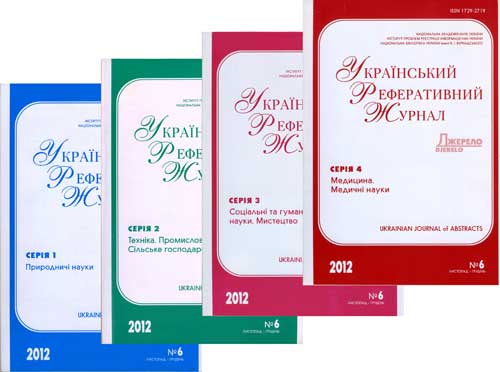РЕФЕРАТИВНА БАЗА ДАНИХ "УКРАЇНІКА НАУКОВА"
Abstract database «Ukrainica Scientific»
Бази даних
Реферативна база даних - результати пошуку
|
|
Пошуковий запит: (<.>ID=REF-0000761040<.>) | |||
|
Загальна кількість знайдених документів : 1 |
|||
Костишин Н. М. Вплив механічної стимуляції на ремоделювання та мінеральну щільність великогомілкової кістки у щурів за умов штучної менопаузи / Н. М. Костишин, М. Р. Гжегоцький // Експерим. та клініч. фізіологія і біохімія. - 2020. - № 3. - С. 12-19. - Бібліогр.: 25 назв. - укp. Aim - investigate the possibility of the influence of non-physiological mechanical stimuli on the condition and mineral density of the tibia during premature menopause. Materials and methods. Vibration was chosen as a form of non-physiological mechanical stimulation, because its beneficial effect can be easily applied to humans in the form of exercises. We evaluated the effect of mechanical stimulation, in the form of whole body vibration with a low level of vibration acceleration (frequency: 50 Hz, amplitude 1,2 mm, 0,3 g, 30 min/day for 5 days/week), on the prevention of loss of tibial mineral mass in postmenopausal osteoporosis in rats model. The experiment lasted 24 weeks. We used X-ray diffraction analysis to assess bone loss and determine the structure of nanocomposites. Determination of calcium content was performed by atomic absorption spectrophotometry. In groups of ovariectomized rats, a statistically significant (p << 0,05) decrease in the mineral component of the tibia was recorded at the 8<^>th Індекс рубрикатора НБУВ: Е60*698.134.22 + Р712.59 + Р418.11 Рубрики: Шифр НБУВ: Ж16160 Пошук видання у каталогах НБУВ Додаткова інформація про автора(ів) публікації: (cписок формується автоматично, до списку можуть бути включені персоналії з подібними іменами або однофамільці)
| |||
| Національна бібліотека України імені В. І. Вернадського |
 |
| Відділ наукового формування національних реферативних ресурсів |
 |
| Інститут проблем реєстрації інформації НАН України |
Всі права захищені © Національна бібліотека України імені В. І. Вернадського